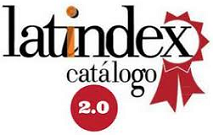Sustitución parcial de harina de soja por harina de canola en la dieta de aves
Comportamiento productivo a los 42 días de edad
Palavras-chave:
Harina de canola, Performance parrillero, Consumo parrilleroResumo
Canola meal, a by-product of oil extraction, constitutes a promising protein concentrate as a substitute for soybean meal in broiler diets. However, the information available is scarce and contradictory. Then, the aim of this work was to evaluate the partial substitution of soybean meal for canola meal, coming from collaborative research with ALUR, in diets for broiler chickens on performance parameters, growth and final weight, feed intake, feed efficiency, weight of carcass and yield, from 21 to 42 days of age. Ninety six male Cobb500 chickens, 21 days old, housed in 1 × 1 m cages (three birds each) on a rice husk floor, equipped with an automatic waterer and a manual feeder, were used. The animals were randomly distributed in four treatments of 24 birds each, a control group receiving a corn-soybean based diet, (21.7 % CP and 3100 kcal/kg ME), and three diets with increasing doses of canola meal (2.5 %, 5 % and 10 %). Directives from CHEA (Honorary Commission for Animal Experimentation, Udelar) were applied for animal management. Daily consumption (g/day) and weekly live weight (kg/bird at 21,28,35 and 42 days) were recorded while weight gain (kg/bird) and feed efficiency (kg fed/kg gain) were determined from 21 to 42 days of age. Data were analyzed by one way-ANOVA with NCSS software (2021). At 42 days of age, previous fasting, chickens were sacrificed in a plant authorized by the MGAP (Calpryca) and freezing for 4 hours, carcass weighted (kg/bird) and yield calculated ( % final Weight). The inclusion of canola meal did not affect feed intake in kg/bird (0 %, 3.06; 2.5 %, 2.93; 5 %, 3.08; 10 %, 3.10; P=0.74), final weight in kg/bird (0 %, 3.48; 2.5 %, 3.47; 5 %, 3.46; 10 %, 3.41; P=0.93) or feed efficiency in kg fed/kg gain (0 %, 1.41; 2.5 %, 1.36; 5 %, 1.44;10 %; P=0.62) or carcass weight in kg/ bird (0 %, 2.90; 2,5 %,2.89; 5 %,2.86; 10 %, 2.74; P=0.44). However, yield was slightly decreased (P<0.05) by 10 % canola meal inclusion (80.3 %) vs. control (83.3 %). Overall results may conclude that the inclusion of up to 10 % of canola meal as partial substitution of soybean meal does not present negative effects on the performance parameters in broiler chickens.
Downloads
Publicado
Como Citar
Edição
Seção
Licença
Copyright (c) 2025 Sociedad de Medicina Veterinaria del Uruguay-Facultad de Veterinaria, Universidad de la República

Este trabalho está licenciado sob uma licença Creative Commons Attribution 4.0 International License.











